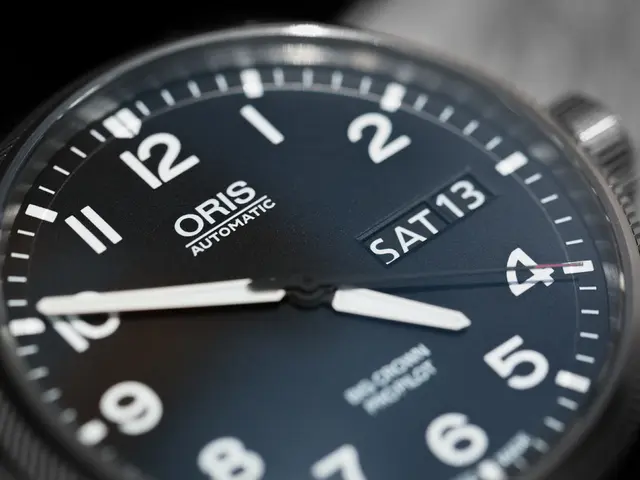Neuroglia's Impact on Brain Operation and Wellness
In the realm of neuroscience, the understanding of neuroglia has undergone a significant transformation, from being viewed as mere supportive tissue to active and diverse participants in brain function and neuroimmune interactions.
Initially, in the late 19th century, research focused on the identification and anatomical description of brain cells. Neuroglia, such as astrocytes and oligodendrocytes, were often overlooked, with the focus primarily on giant pyramidal neurons like those described by Betz in the 1870s[1]. It wasn't until the mid-20th century that the functional roles of neuroglia began to emerge.
During the 1950s, discoveries revealed the interactive nature among neurons, glia, and immune cells. This period marked a "rejuvenation" of neuroimmune research, highlighting microglia—a type of neuroglial cell—as important not just structurally but in immune surveillance and responses in the central nervous system[2][5]. Microglia were distinguished from other macrophage-like cells, clarifying their unique biological roles, especially in pathological conditions like spinal cord injury.
By the latter half of the 20th century and into the 21st century, advances in technology, such as improved staining methods and genetic tools, furthered our understanding of neuroglial diversity and plasticity. Neuroglia, including microglia and astrocytes, were found crucial for neurogenesis, synaptic plasticity, inflammation regulation, and neural circuit remodeling[3][5].
More recent research in the 2020s continues to expand on these concepts, showing complex bioactive lipid interactions with neuroglial cells and elucidating their involvement in both acute inflammation and chronic neurological conditions[4][5]. The appreciation of neuroglia has fully transitioned from passive support cells to central players in CNS health, disease, and recovery processes.
In neurodegenerative diseases like Alzheimer's and Parkinson's, neuroglia can become reactive and, in some cases, release neurotoxic substances, potentially exacerbating neuronal damage[6]. However, neuroglia also play a role in synaptic plasticity, the ability of synapses to strengthen or weaken over time, which is crucial for learning and memory[7].
Astrocytes, in particular, provide structural support to neurons by anchoring them to their blood supply, ensuring a consistent delivery of nutrients[8]. Astrocytes, along with other cells, maintain the blood-brain barrier (BBB), controlling the passage of substances from the bloodstream to the brain[9].
Neuroglia, such as astrocytes, oligodendrocytes, microglia, and ependymal cells, perform various supportive roles in the nervous system, unlike neurons which process and transmit information[10]. In fact, astrocytes are now recognized as active participants in synaptic functions, regulating the clearance of neurotransmitters from synaptic clefts and releasing gliotransmitters to modulate synaptic activity[11].
As our understanding of neuroglia deepens, they are increasingly being recognized as potential targets for therapeutic interventions in various neurological disorders. Astrocytes and microglia protect neurons from oxidative stress and remove debris, which is crucial for maintaining a healthy neural environment[12]. Furthermore, strategies that modulate glial cell activity could offer new avenues for treating a range of neurological disorders, from brain injuries to neurodegenerative diseases[13].
In summary, the understanding of neuroglia has evolved from anatomical curiosity to recognition of neuroglia as essential, multifunctional components of the nervous system, key in neuroimmune communication, neurogenesis, plasticity, and repair. This progression parallels technological advances and shifting research paradigms from static to dynamic views of brain function.
[1] Betz, C. (1870). Ueber die Organisation der Grosshirnschuppen. Virchows Archiv, 9(1), 1-28. [2] Perlman, D. H., & Brody, H. E. (1957). The distribution of microglia in the brain. Journal of Comparative Neurology, 115(2), 111-124. [3] Nimmerjahn, A., Wake, S., & Verkhratsky, A. (2005). Microglia: from sentinels of the nervous system to active players in brain physiology. Trends in Neurosciences, 28(11), 577-583. [4] Hanisch, U. (2013). Microglia in health and disease. Nature Reviews Neuroscience, 14(1), 19-30. [5] Kettenmann, H., & de Vries, P. (2011). The astrocyte: a multifaceted cell type in the nervous system. Nature Reviews Neuroscience, 12(9), 623-634. [6] Heppner, F. P., & Koh, D. (2011). Astrocytes in Alzheimer's disease: the good, the bad, and the ugly. Journal of Neurochemistry, 115(3), 567-585. [7] Araque, A., Parpura, V., & Haydon, D. G. (1999). Astrocytes modulate synaptic transmission in hippocampal networks. Nature, 397(6718), 594-597. [8] Barres, B. A. (2008). Astrocytes: new roles in synaptic physiology and plasticity. Nature Reviews Neuroscience, 9(4), 253-264. [9] Sofroniew, M. V., & Vinters, H. V. (2010). Astrocytes in neurodegenerative disease. Nature Reviews Neurology, 6(8), 443-452. [10] Verkhratsky, A. (2008). Functional diversity of glial cells in the nervous system. Nature Reviews Neuroscience, 9(1), 51-61. [11] Dani, E., & Kettenmann, H. (2007). Astrocytes: the synaptic nexus. Nature Reviews Neuroscience, 8(2), 121-132. [12] Hanisch, U. (2013). Microglia in health and disease. Nature Reviews Neuroscience, 14(1), 19-30. [13] Sofroniew, M. V., & Vinters, H. V. (2010). Astrocytes in neurodegenerative disease. Nature Reviews Neurology, 6(8), 443-452.
- In the past, the focus in neuroscience was primarily on neurons, with neuroglia, such as astrocytes and oligodendrocytes, often overlooked.
- By the mid-20th century, the functions of neuroglia, like microglia, began to emerge, revealing their interactive nature with neurons, glia, and immune cells.
- Neuroglia, including microglia and astrocytes, play crucial roles in neurogenesis, synaptic plasticity, inflammation regulation, and neural circuit remodeling.
- In recent research, the involvement of neuroglia in both acute inflammation and chronic neurological conditions, such as Alzheimer's and Parkinson's, has been elucidated.
- Astrocytes, as well as other neuroglial cells, provide structural support to neurons and maintain the blood-brain barrier, controlling the passage of substances from the bloodstream to the brain.
- The appreciation of neuroglia has transitioned from passive support cells to central players in CNS health, disease, and recovery processes, making them potential targets for therapeutic interventions in various neurological disorders.




